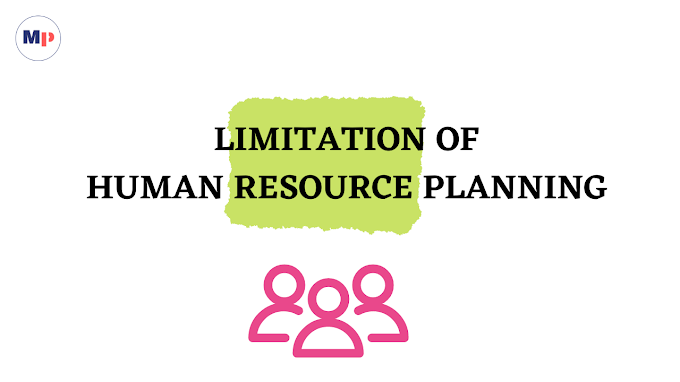BARRIERS OR LIMITATIONS OF HUMAN RESOURCE PLANNING
The major barriers or limitations to human resource planning
are as follows
1. Uncertainties:
Seasonal employment, labour turnover,
absenteeism, technological changes, and market up-downs are uncertainties,
which are always there while making human resource planning.
2. Inaccurate Forecasting Methods:
Human resource planning
involves forecasting the human resource demand and supply. Various forecasting
methods are not very much accurate. Hence, such forecasts are also not fully
accurate. If the time horizon is very long, there are more chances of
inaccuracies. Apart from that, inaccuracy also increases when the forecasts
made for various departments or divisions
are merely aggregated without critical review and are taken to be the forecast
for the whole organisation.
3. Lack of Support from Top Management:
In the absence of
support and commitment from the top-level management human resource department
finds it difficult to obtain information on various vital inputs in human
resource planning such as future growth plans, the introduction of new technology,
etc., are generally not available. Hence, it is not always possible to develop
effective human resource plans.
4. Inadequate Information System:
In most of the industries
in our country 'Human Resources Information System' has not been fully
developed, especially due to the low status given to the personnel department and less
importance attached to human resource planning. Moreover, reliable data
relating labour market, trends in human resources, places etc. are generally not
available. Hence, it is not always possible to develop effective human resource
plans.
5. Employee Resistance:
Employees and trade unions also
resist human resource planning as they think that it increases their workload
and regulates them through productivity bargaining. They also believe that
human resource planning prepares programmes for securing manpower mostly from
outside, generally by ignoring internal manpower supply.
6. Employers' Resistance:
Many employers resist human
resource planning because they think that it increases the cost of manpower as
trade unions demand employees based on the plan, for more facilities, and
for benefits including training and development. Moreover, employers feel that
human resource planning is redundant or useless because candidates will be
available as and when required especially due to the severe unemployment situation
in India.
7. Time-Consuming and High Cost:
Human Resources Planning is
a time-consuming, complex, and highly cost-oriented exercise. Hence it is feared
to fail at cost-benefit analysis.
8. Lack of Participation and Coordination among Operating Managers:
In many cases, operating managers look at the whole exercise of human
resource planning with doubt and mistrust. They do not willingly participate in
it and do not properly coordinate with top management and the human resource
department.
9. Imbalance between Quantitative and Qualitative focus:
Some firms view human resource planning as a game of numbers designed to ensure
the flow of people in and out of the firms, exclusively focus on quantitative aspects such as career planning and development, increase in skill levels
through training and retraining, enhancement of morale, and motivation, etc.
RELATED TOPIC
Characteristics of Human Resource Management
Objective of Human Resource Management
Scope of Human Resource Management





